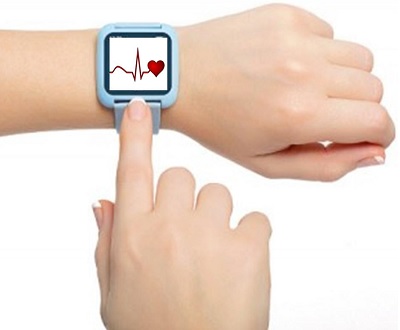Among them are that it will ship only with the purchase of its Liquid Jade Android smartphone.
The Liquid Leap will be the first wearable tech put out by Acer, and it will be made up primarily of a fitness tracker with some additional smartphone-friendly features and that will be set onto a rubberized band.
This device will be sold only as a package deal, along with the Liquid Jade Android high end smartphone.
After having remained relatively silent about its wearable tech, Acer has now revealed a number of details about this device, which is expected to become available in smartphone packages in the third quarter of this year. Though it will mainly be a fitness tracker, it will also provide some basic notifications and controls for the Liquid Jade smartphone. This means that while it will help the wearer to track how far he or she has walked and how many calories have been burned in the process, it will also allow users to control music being played on the smartphone and will notify the wearer about incoming text messages and calls.
This wearable tech has a tiny 1 inch touchscreen that can be used to control all of its features.
 It has been called one of the wearables that is most similar to jewelry among the releases in that category, so far. The features, however, have been labeled as being quite similar to the Gear Fit, from Samsung, which is currently being sold as an independent item that can be connected to work with Galaxy phablets and smartphones.
It has been called one of the wearables that is most similar to jewelry among the releases in that category, so far. The features, however, have been labeled as being quite similar to the Gear Fit, from Samsung, which is currently being sold as an independent item that can be connected to work with Galaxy phablets and smartphones.
The announcement of the Liquid Leap was made a few days ahead of the Taiwan Computex trade show, though the first reveal of the prototype had been in New York back in April. At the time that this article was written, the prices of both the smartphone and the fitness tracker had not yet been revealed. At the same time, it was announced that Liquid Leap would not become immediately available in the United States market. Instead, this wearable tech would first make its way into the developing nation marketplace.
The electronics giant now has a prototype for yet another device in the wearables category.
Ram Fish, the vice president of digital health at Samsung, was spotted at a San Francisco event, showing of a prototype of the Simband, which is a conceptual model for a new form of health tracking wearable technology wristband that is currently in the works at Samsung.
There have already been a large number of players within the health and fitness tracker market due to popularity.
Among all of the categories in wearable technology, it is in health and fitness that it has managed to take off at the greatest rate. There have been many different guesses as to why this is the case. Among them, one of the primary explanations is that these devices are practical and are affordable for the average consumer, particularly when compared to smartwatches which are easily two to three times more expensive…or more.
While pedometers have been around for ages, Samsung and other wearable technology companies aim for more.
 Although the technology for pedometers has changed over the years, the basic concept has been around for a while. However, in the latest wearables, these trackers are meant to bring much more value to consumers, such as the intensity of a workout, the number of calories burned, and even more complex information such as biofeedback. Many consumers would also like to measure things such as vital signs – heart rate, blood pressure, blood oxygen levels, hydration, and others, for example.
Although the technology for pedometers has changed over the years, the basic concept has been around for a while. However, in the latest wearables, these trackers are meant to bring much more value to consumers, such as the intensity of a workout, the number of calories burned, and even more complex information such as biofeedback. Many consumers would also like to measure things such as vital signs – heart rate, blood pressure, blood oxygen levels, hydration, and others, for example.
The Simband is designed to provide biometrics just like that, such as temperature and heart rate. Ram Fish didn’t hesitate to show curious event attendees the device, which features a square face and black body. He was reported to have appeared highly enthusiastic about this new mobile tech as he spoke before the San Francisco crowd.
The device on the health and fitness tracker revealed real time vital signs such as the fact that his heart had been beating at a rate of 87 beats per minute (which is about healthy considering the situation and environment) and his temperature. That said, he also switched screens on this open sensor platform based wearable technology device to be able to show trends, such as the variability of his heart rate and other forms of data that were being tracked and recorded.
 It has been called one of the wearables that is most similar to jewelry among the releases in that category, so far. The features, however, have been labeled as being quite similar to the Gear Fit, from Samsung, which is currently being sold as an independent item that can be connected to work with Galaxy phablets and smartphones.
It has been called one of the wearables that is most similar to jewelry among the releases in that category, so far. The features, however, have been labeled as being quite similar to the Gear Fit, from Samsung, which is currently being sold as an independent item that can be connected to work with Galaxy phablets and smartphones.
